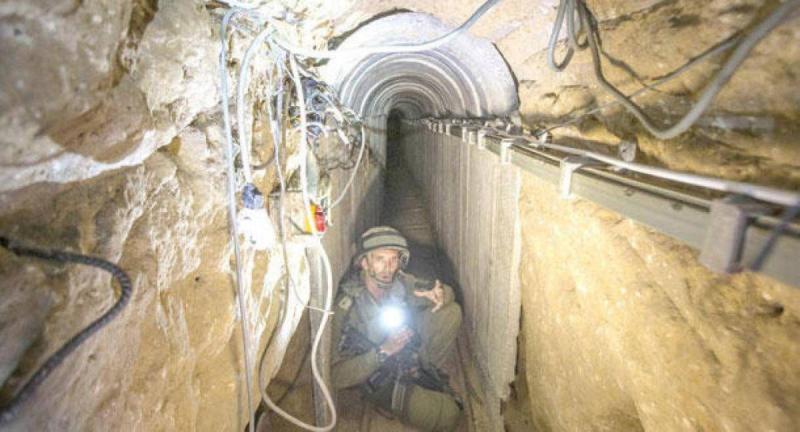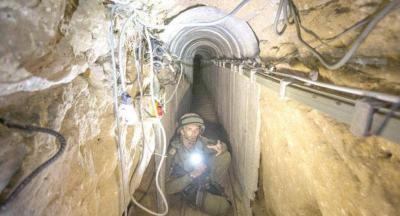Nine months after the Israeli war on the besieged Gaza Strip, the complex tunnel dilemma remains, especially with Tel Aviv's insistence on what it calls "war objectives" aimed at ending the presence of Hamas. During this time, the Al-Qassam Brigades, the military wing of Hamas, have focused on fighting as a decentralized and largely concealed force, attempting to compensate for Israel's technological and numerical superiority. They have withdrawn from their bases and frontline positions, concealing themselves during attacks rather than opting for direct confrontation. They also preferred to launch surprise attacks on small groups of Israeli soldiers, according to a report by the American newspaper "The New York Times."
The report emphasized that Hamas fighters are now appearing only sporadically, emerging suddenly from tunnels armed with rocket launchers to target Israeli soldiers before quickly returning to their underground fortifications. The surprise came from statements by senior Israeli officials, who stated that they had only destroyed a small part of Hamas's tunnel network in Gaza despite the fierce offensive and the prolonged months of conflict.
What is the secret of the tunnels that have puzzled Israel? According to the American report, Hamas relies on a warfare strategy based on groups rather than direct confrontation, often hiding their fighters and stockpiling weapons in an extensive tunnel network. It has also become clear that even after nine months of war in Gaza, a significant portion of Hamas’s tunnel network remains highly operational and poses a security threat to Israel, according to an Israeli army report published by "The Times of Israel" on Monday.
The report added that army estimates indicate that the Hamas tunnel network remains in a high state of readiness in many areas. It confirmed that the network is in a high state of preparedness in central Gaza camps, the city of Rafah to the south, and the Shuja'iyya neighborhood to the east, all of which are in a state of heightened readiness. It also underscored that the tunnels in Rafah are highly ready and allow for an approach to the border area.
The "biggest threat" was highlighted in an extensive report by the "Associated Press," published last Saturday, which focused on the tunnel network built by Hamas under Gaza, describing it as representing "the biggest threat" to Israeli forces preparing to launch a wide-scale ground assault on the besieged territory. "The New York Times" also noted that an analysis of videos released by Hamas and interviews with three members of the movement and dozens of Israeli soldiers indicated that the use of hundreds of miles of tunnels, which surprised Israeli leaders due to their size, has been significant.
The intricacies of the tunnels have proved to be the most difficult aspect in the Israeli war on the Gaza Strip. While Tel Aviv has tried by all means to eliminate them, it has still not succeeded despite all efforts, having even attempted to flood them without success. Hamas fighters operate within a complex and fortified tunnel network, some buried 40 feet underground, capable of hiding ambushes or being rigged with explosives and set to collapse. This means that Israel can bombard Gaza as it wishes and deploy bunker-busting munitions to clear some tunnels, but the Israeli army will still need to deploy thousands of troops to invade the "Gaza Metro" to neutralize every Hamas fighter, which is not an easy task, according to Tel Aviv.




